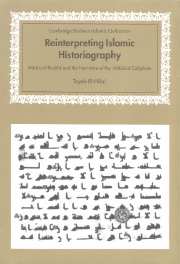Book contents
- Frontmatter
- Contents
- Acknowledgments
- List of abbreviations and note on the dates
- Genealogical table: the line of the early ʿAbbāsid caliphs
- Chapter 1 Historical background and introduction
- Chapter 2 Hārūn al-Rashīd: where it all started or ended
- Chapter 3 Al-Amīn: the challenge of regicide in Islamic memory
- Chapter 4 Al-Maʾmūn: the heretic Caliph
- Chapter 5 The structure of civil war narratives
- Chapter 6 Al-Mutawakkil: an encore of the family tragedy
- Conclusion
- Select bibliography
- Index
Chapter 5 - The structure of civil war narratives
Published online by Cambridge University Press: 26 June 2009
- Frontmatter
- Contents
- Acknowledgments
- List of abbreviations and note on the dates
- Genealogical table: the line of the early ʿAbbāsid caliphs
- Chapter 1 Historical background and introduction
- Chapter 2 Hārūn al-Rashīd: where it all started or ended
- Chapter 3 Al-Amīn: the challenge of regicide in Islamic memory
- Chapter 4 Al-Maʾmūn: the heretic Caliph
- Chapter 5 The structure of civil war narratives
- Chapter 6 Al-Mutawakkil: an encore of the family tragedy
- Conclusion
- Select bibliography
- Index
Summary
How disagreement between the brothers first developed and then evolved into political and military conflict is a question that remains shrouded with mystery. Did al-Amīn commit the first transgression by removing his brother from the succession and replacing him with his own son, Mūsā al-Nāṭiq bi'l- Ḥaqq? Or was it al-Maʾmūn who overreacted to al-Amīn's initial move to nominate Mūsā as second successor by dropping al-Amīn's name from the coinage struck in the east, which in turn led al-Amīn to turn decidedly hostile and to drop his brother from the line of succession altogether? Or was it a third scenario, overwhelmingly favored by the medieval sources, in which the dispute over succession was built on an earlier disagreement that surfaced right after al-Rashīd's death, when al-Amīn sought to assert his central authority over the eastern provinces?
In the document containing the covenant of succession, the Mecca Protocol, we are told that Hārūn al-Rashīd designated al-Maʾmūn as autonomous ruler over the eastern provinces stretching from Rayy to Khurāsān. All the financial, military, and administrative affairs in the region were to fall solely under the jurisdiction of al-Maʾmūn, while al-Amīn was to rule the westerly parts of the empire, refraining entirely from asserting any measure of sovereignty over the east. The document strictly forbade any violation of the territorial division, and outlined severe penalties against either party seeking to meddle in the other's zone.
- Type
- Chapter
- Information
- Reinterpreting Islamic HistoriographyHarun al-Rashid and the Narrative of the Abbasid Caliphate, pp. 143 - 177Publisher: Cambridge University PressPrint publication year: 1999



